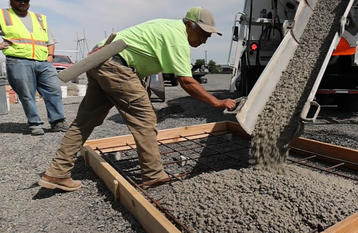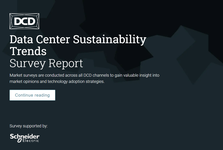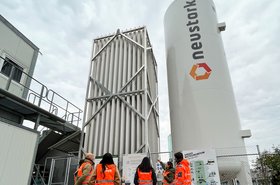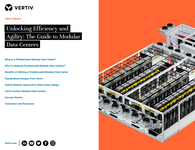Microsoft is testing lower-carbon concrete mixes in construction projects at its data center site in Quincy, Washington.
The company is testing concrete recipes that include material derived from microalgae, along with fly ash and slag, with a goal of cutting the embodied carbon dioxide emissions in its concrete by half.
The construction sector is responsible for a massive amount of carbon emissions, with concrete alone accounting for eight percent of global emissions, according to Nature magazine. Steel adds another seven percent, according to the World Steel Association.
The data center industry has attempted to get to grips with this, as emissions caused by the construction of facilities are a major part of the "Scope 3 emissions" produced by supply chains.
Previously. Microsoft has tested conventional concrete with added CO2, and invested in the product's maker CarbonCure. The added CO2 in CarbonCure's mix makes the concrete stronger, but only balances a small fraction of the CO2 emitted in producing the cement involved.
Amazon has also invested in CarbonCure and tried another green concrete mix from Holcim.
Microsoft has promised to be carbon-negative by 2030 and has also looked into using other low-carbon building materials, including wood, earth, hemp, and mushrooms.
Concrete uses limestone, which is typically heated with clay to around 2,650°F (1,454°C) in a kiln. This generates CO2 directly, and the kiln itself is normally fired by coal or gas, creating still more CO2.
At Quincy, Microsoft is testing three alternative concrete mixes. One includes "biogenic" limestone derived from microalgae and other additives; a second one uses industrial waste materials known as fly ash and slag, which are activated with alkaline soda ash. A third combines the other two.
Microsoft intends to test the mix designs to get one that matches structural needs and reduces the embodied carbon by more than 50 percent.
“It’s just concrete,” said Microsoft infrastructure engineer Steve Gilges, in a Microsoft blog. “But the material properties, chemical reactions, and mechanical alterations can be complex especially when introducing synthetic fillers combined with biologically derived components.”
The biogenic limestone comes from Minus Materials, which is commercializing a process using marine algae, developed at the University of Colorado at Boulder.
At this stage, lower-carbon concrete is still experimental, but James says that's all the more reason to test it: “The biggest enemy to progress is this concept that it has to be perfect before you start,” he said, in the blog post. “The best way to make an actual impact is to go out there with a good enough solution and what’s good enough now is using these things that can bring down the carbon, so we can start making an impact right away.”
Through its Climate Innovation Fund, Microsoft is also backing Prometheus Materials, a company making bio-cement using a different algae process.
The Fund has also invested in Boston Metal, a company that is working on iron production using electrolysis of ore with renewable energy, to eliminate CO2 emissions from steelmaking.
In its construction, Microsoft now accounts for carbon using third-party verified Environmental Product Declarations (EPDs) for construction materials.
“Within the built environment, decarbonization of concrete and steel is critically important from a climate impact perspective,” says Brandon Middaugh, the senior director of Microsoft’s $1 billion Climate Innovation Fund.







